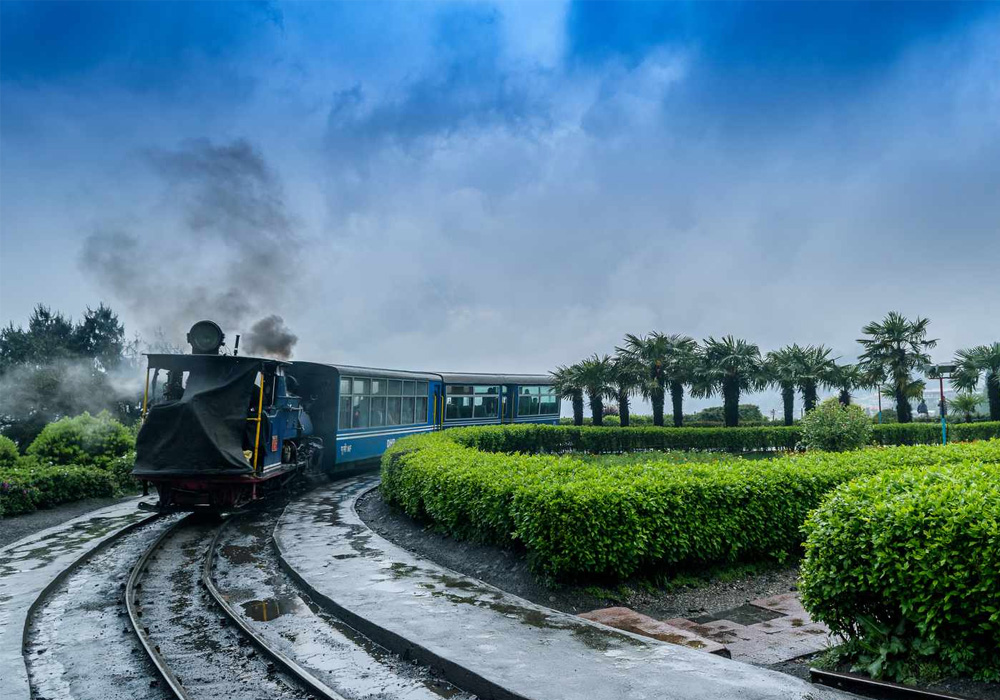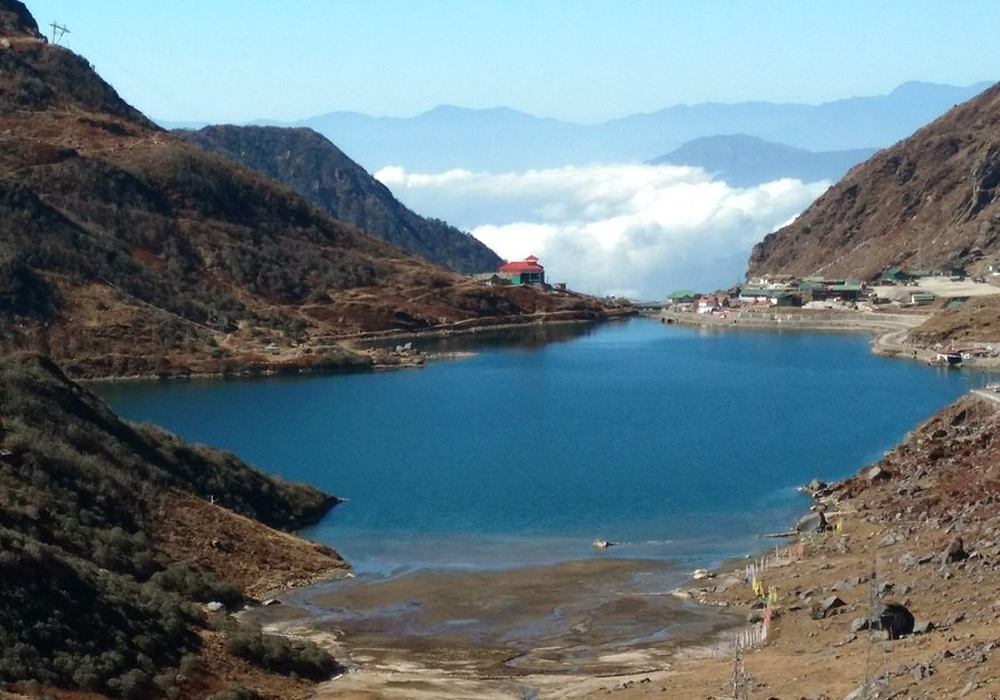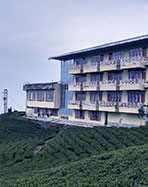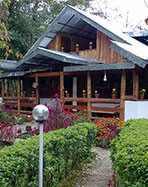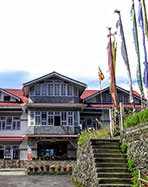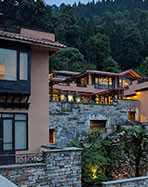Lying in the northeast region of India, Sikkim is a little paradise on earth. This mini-state of India has an incredible history of establishment and diversity. Boasting the third highest mountain peak in the world, Kanchenjunga, Sikkim is also an abode to alpine meadows, glaciers, and vast varieties of wildflowers. With its capital in Gangtok, it shares boundaries with Bhutan, Tibet, and Nepal, having a reflection of their culture as well. The weather in Sikkim is most pleasant between March and November, as it endows visitors with nature's blooming and vibrant beauty during that time. Witnessing the mighty Himalayan range from Sikkim is a surreal experience that makes this utterly beautiful state a rival to paradise. Want to get more information about Sikkim? Let's read this informative blog!
History of Sikkim
Beginning in the 17th century, Chogyals (Namgyal Dynasty) ruled Sikkim for almost 333 years, and the first Tibetan lama ruler was Penchu Namgyal in 1642. After 1706, several conflicts happened between Nepalese, Bhutanese, and Tibetans, where Sikkim emerged victorious. However, the repercussions of these wars were dreadful, as the state lost a section of its boundary. In 1814, the alliance of Sikkim with the East India Company helped the state to regain its territories and finally bought Darjeeling. Soon after the Calcutta Convention of 1890 was signed by Viceroy Lord Lansdowne and Qing China's Imperial Associate, the boundaries of Sikkim and Tibet separated. After Independence, relations between New Delhi and Gangtok were redefined by a treaty in 1950.
After that, Sikkim faced internal turmoil in maintaining peace among its people due to income inequality and feudalism. This led to a series of conflicts between the Chogyal rulers themselves. With this, the Chogyal made a new constitution in 1953 and conducted elections in 1957, 1960, 1967, and 1970. But nothing helped, and they extended hands to India for the association, so Sikkim was made a protectorate of India. When Sikkim's people desired greater association in 1974, India came up with the 35th Constitutional Amendment by giving the title of the associate state to Sikkim with the introduction of Article 2A in the Constitution. But, this exceptional status of Sikkim could not keep them much away from being a part of India. Finally, a referendum (59637 people voted in favour of joining India and 1496 were against it) by Sikkim's population led to the 36th Constitutional Amendment, and Sikkim became a fully-fledged state of India in 1975.
Read More : Things To Do In Sikkim
Culture of Sikkim
The icon of integrity and diversity reflects Sikkim's culture, customs, and traditions. The culture and tradition of Sikkim indicate a blend of many tribes, communities, religions, languages, and groups across its boundaries. The state's urban areas shelter many plainsmen who usually adopt government services or some businesses. The original residents of Sikkim grabbed the name Lepchas, whereas people of Tibetan origin were known as Bhutias. Also, there are a lot of Nepalese people who migrated to this land during ancient times. 80 % of the Sikkim population consists of Nepalese, most orthodox Hindus except Tamangs and Sherpas, who follow Buddhism. It also boasts a calming monastery culture, and the tashiding monastery in the western Sikkim area is considered the most sacred.
The community later adopted Buddhism and Christianity and started worshipping good and bad spirits. The Lepchas, Bhutias, and Nepalese speak the Lepcha, Sikkimese, and Nepali languages. This blend of diverse cultures and traditions brings many different festivities and rituals that elevate the vibrancy of Sikkim Tourism even more. Bhumchu Festival is one of the significant festivals of Sikkim.
Food of Sikkim
The food of Sikkim is a blend of India, Nepal, Bhutan, and Tibet. While reflecting all of these cultures, Sikkim food chiefly encompasses Sinki Soups, Gundruk, Noodles, Thukpas, Cottage cheese, Bamboo shoots, Fermented rice products, Fermented soybean, Tomato pickles, and also a lot of other fermented dishes. The state produces amazing rice, which is also a staple food. Coming to its traditional iconic dish, dumplings and wontons give pleasure to the tongues of the visitors. Among non-vegetarian category food, one must savour the taste of fish, pork, and beef here.
Having a cold climate throughout the state, fermented dishes are quite popular among locals. The cooking method involves boiling and steaming over frying while keeping spices mild; it adds uniqueness to their dishes. People of Sikkim also prefer a few drinks, including beer, whiskey, and rum, to keep themselves warm. Last but not least, the signature style of Sikkim food is the process of fermentation, with which they preserve many non-seasonal foods while following their ancestral tradition. This tourist destination in India delights the foodies with a wide range served on the food platter. The dishes are akin to many yet are unique and delectable.
Art and HandiCrafts of Sikkim
The art and culture of Sikkim, India, are known for their tradition of having a good hand in manufacturing several utility objects. With this commendable art and talent, artisans of the region make incredible handicraft objects comprising woollen carpets, Choksey tables, thankas delineating paintings, and canvas wall hangings. There is even an Institute of Cottage Industries that the government established to promote the state's cottage sector. Melli, Yuksom, Gangtok, Namchi, and Pellingare places that enthral the hearts of visitors with an array of unique handloom products owing to their patterns.
The state's women are no step behind men when contributing to creativity. The amazing weaving skills of local women also grab the attention of visitors. What is highly popular outside the boundaries of Sikkim is the awe-striking collection of handmade carpets and papers. Lastly, the handicrafts of bamboo and cane products complete the art and craft of the Sikkim collection. Artisans of the state are dexterous and hand-craft some of the finest pieces not found anywhere else in the world.
Places To Visit In Sikkim
The best reflection of natural charm, Sikkim is a beautiful place to visit as it endows tourists with immense travel opportunities. Here is the list of Tourist Attractions in Sikkim that enthrals the hearts of visitors.
- Mark on a trek to Kanchenjunga base camp to test your endurance level.
- Monastery tour to Rumtek Monastery and many more will be a profound experience.
- Vibrant festivals such as Lhabab Duchen and Bhumchu etc are good ways to learn the unique culture of the state.
- Experience paragliding and ropeway of Gangtok that is exhilarating.
- Peddle your cycle on Silk Route that can enthrall you.
- Embark on a trek to Dzongri that is quite enduring.
- Gather peace at the mesmerizing Tsomgo Lake to unwind yourself.
- Try some of the most exciting adventure sports of India at the Teesta River.
- Enjoy tea tasting sessions and indulge in some merrymaking at the unique Teesta Festival.
Among all notable Tours to India, Sikkim tourism is the best option, as the beauty of nature is at its zenith here. The state has much to offer when a visitor genuinely steps on this land.
How to Reach Sikkim?
By Air
The nearest airport is Bagdogra Airport; therefore, you can fly to Sikkim through this airport. It is also important to note that Bagdogra Airport is approximately 125 kilometres from Sikkim. One can hire a taxi or take a shared cab from the airport to Gangtok, the capital city of Sikkim. The distance between Bagdogra and Gangtok is about 124 km, which takes around 4 to 5 hours to cover.
By Road
Sikkim has a good road network and is accessible by all the four approaches. You can opt for a bus or a taxi from the nearby cities of Siliguri or Darjeeling, etc. The roads are good, and the view during the journey is very attractive due to the mountains. NH 10 runs from Siliguri to Gangtok, which makes this route preferred by most travellers.
By Train
The rail head nearest to Sikkim is New Jalpaiguri (NJP), which is approximately 120 km away from Gangtok. From New Jalpaiguri, one can hire a taxi or take a bus to Sikkim or any other part of North Eastern India. The distance from Siliguri to New Jalpaiguri is quite comfortable, and there are many trains from all over India.
Conclusion
Sikkim is a wonderful state with a lot of art and cultural heritage. The people of Sikkim are hospitable and accommodating, and it is always a pleasure to visit this region. It is known for its scenic beauty, active fairs and festivals, and cultural practices. While in Sikkim, one can explore some of the many monasteries, taste the delicious local food and interact with the friendly people. The people of Sikkim are friendly and diverse, and the view of the place is breathtaking, making it a perfect place to travel. To get more information on Sikkim, it is advisable to visit travel-related sites and forums.
Plan your trip with Adotrip today. Enjoy a wealth of information and end-to-end travel assistance, and book flights, Hotels, and Tour Packages under one roof.
With Adotrip, nothing is far!
Book Sikkim Tour Packages
Frequently Asked Questions
Q. Why is Sikkim very famous?
A. Sikkim is famous for its stunning landscapes, beautiful mountains, and rich culture. It has many famous monasteries, scenic trekking routes, and unique festivals. The state is also known for its warm and friendly people.
Q. What is the best time to visit Sikkim?
A. The best time to visit Sikkim is from March to June and September to December. The weather is pleasant during these months, and you can enjoy beautiful views and outdoor activities.
Q.Was Sikkim part of Nepal?
A. Yes, Sikkim was once part of Nepal. It became a separate kingdom in the 17th century and later joined India in 1975.
Q. What is the religion of Sikkim?
A. Sikkim's main religion is Buddhism, but many people also follow Hinduism. The state has many beautiful monasteries and temples.
Q. What is the famous food of Sikkim?
A. The famous food of Sikkim includes momos (dumplings), thukpa (noodle soup), and gundruk (fermented leafy greens). These dishes are very popular and loved by both locals and visitors.

